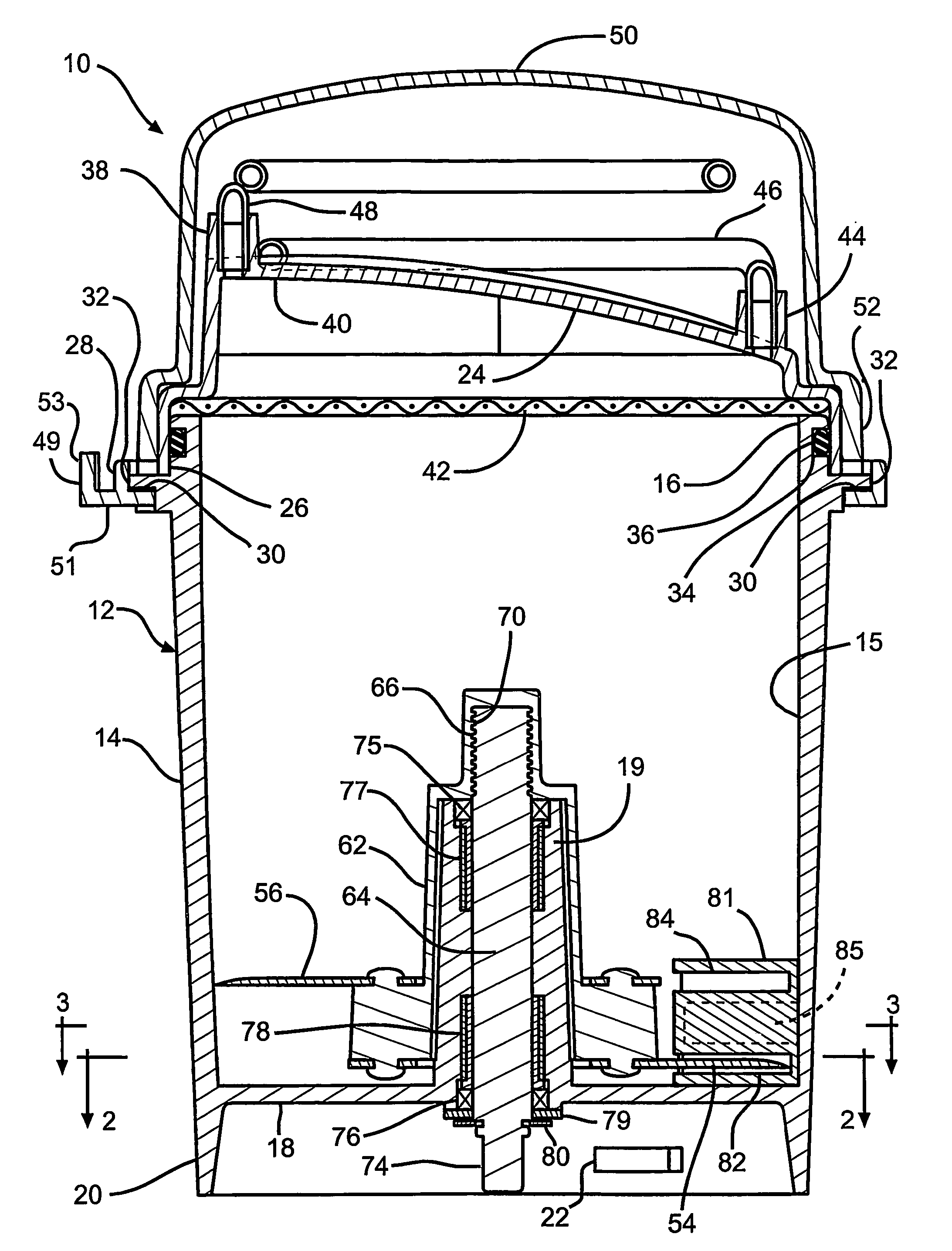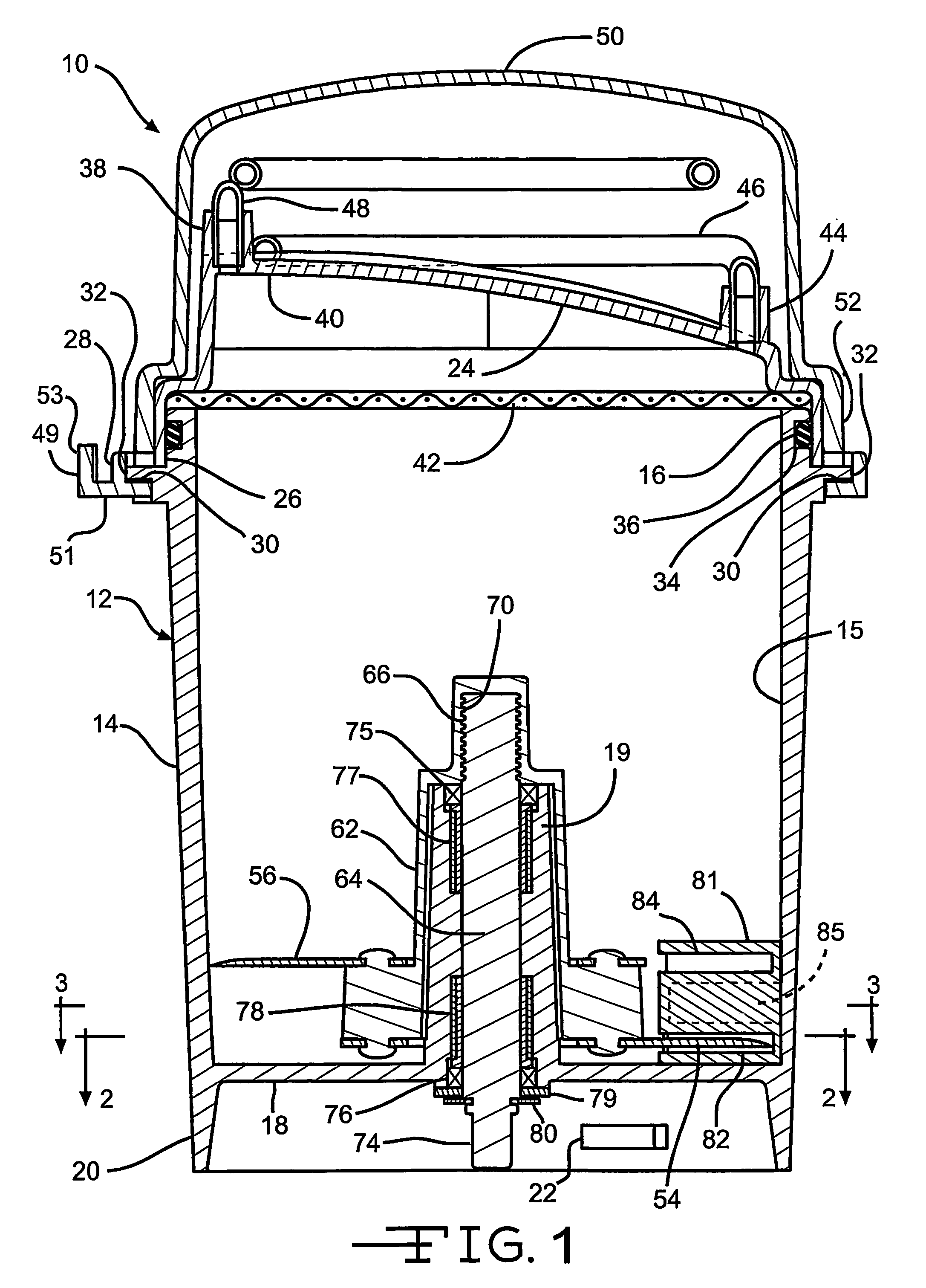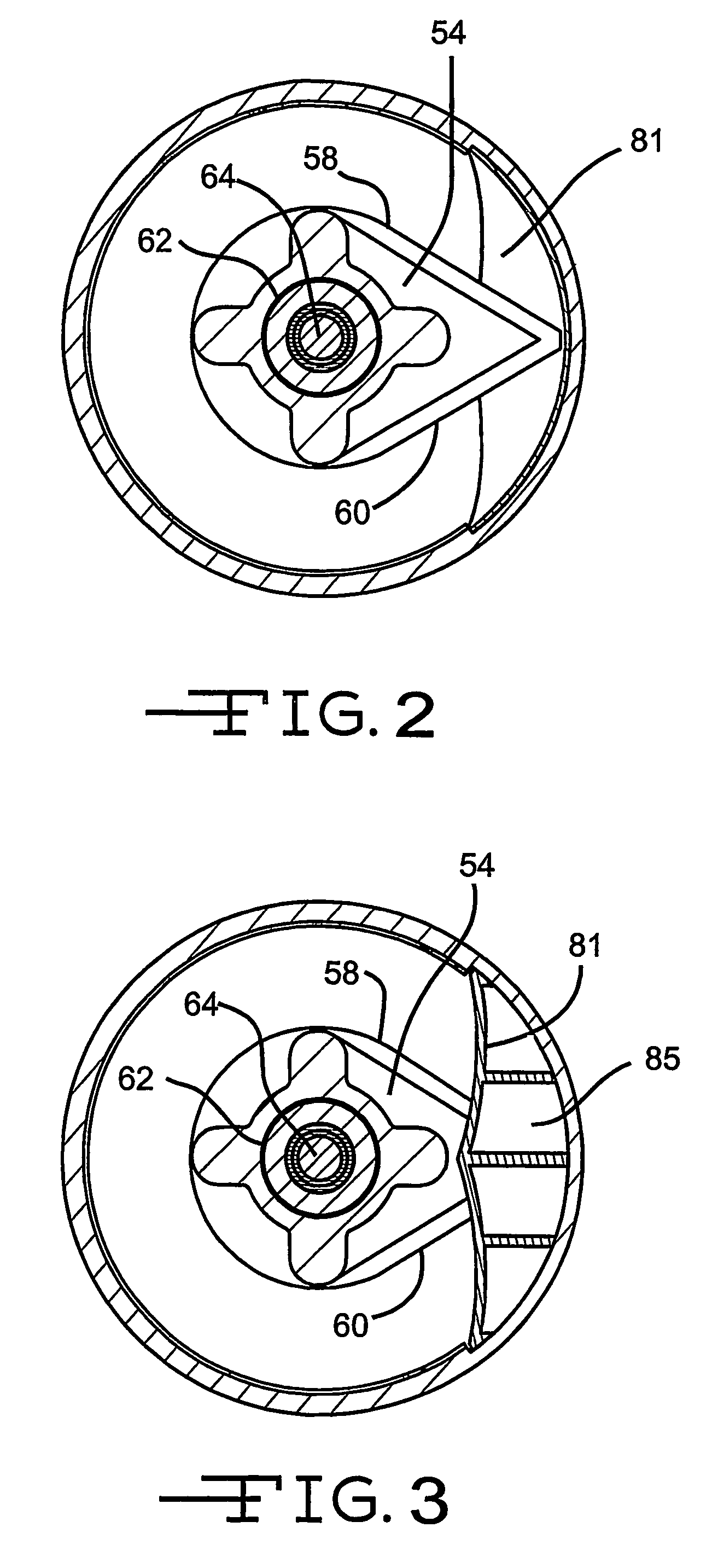Tissue dissociation device
a tissue dissociation and tissue technology, applied in the field of medical laboratory equipment, can solve the problems that the small food processor is not suitable for reducing tissue, and achieve the effect of dissociating tissu
- Summary
- Abstract
- Description
- Claims
- Application Information
AI Technical Summary
Benefits of technology
Problems solved by technology
Method used
Image
Examples
Embodiment Construction
[0017]The present invention relates to a tissue dissociation device that is capable of dissociating biological tissue into a cell suspension. FIG. 1 illustrates a preferred embodiment of a tissue dissociation device 10 according to the invention. The device includes a container 12 for holding the tissue to be dissociated and a liquid medium. The container can have any suitable structure. In the illustrated embodiment, the container is cup-shaped, including a symmetrical outer wall 14 that is generally cylindrical in shape, an open upper end 16 and a closed lower end 18. The container has a sterile interior 15. In one embodiment, particularly useful with lung tumor cells, the container has a volume of from about 100 ml (about 6 cu inches) to about 1000 ml (about 60 cu inches). The size of the container may differ based on the type of tissue to be dissociated.
[0018]The container includes a tubular central hub 19 that extends upward inside the container from the lower end. The distance...
PUM
| Property | Measurement | Unit |
|---|---|---|
| velocity | aaaaa | aaaaa |
| length | aaaaa | aaaaa |
| volume | aaaaa | aaaaa |
Abstract
Description
Claims
Application Information
 Login to View More
Login to View More - R&D
- Intellectual Property
- Life Sciences
- Materials
- Tech Scout
- Unparalleled Data Quality
- Higher Quality Content
- 60% Fewer Hallucinations
Browse by: Latest US Patents, China's latest patents, Technical Efficacy Thesaurus, Application Domain, Technology Topic, Popular Technical Reports.
© 2025 PatSnap. All rights reserved.Legal|Privacy policy|Modern Slavery Act Transparency Statement|Sitemap|About US| Contact US: help@patsnap.com



